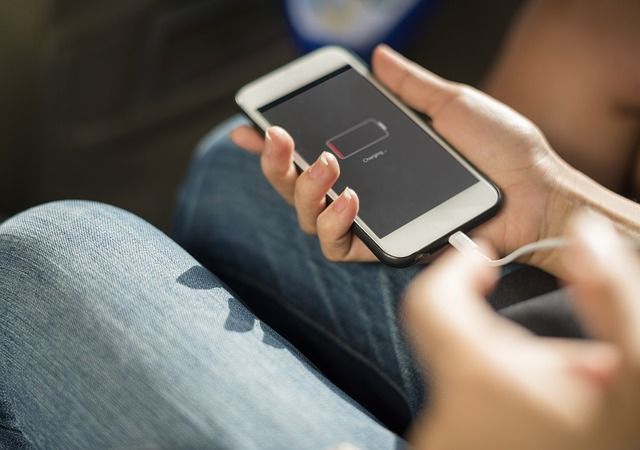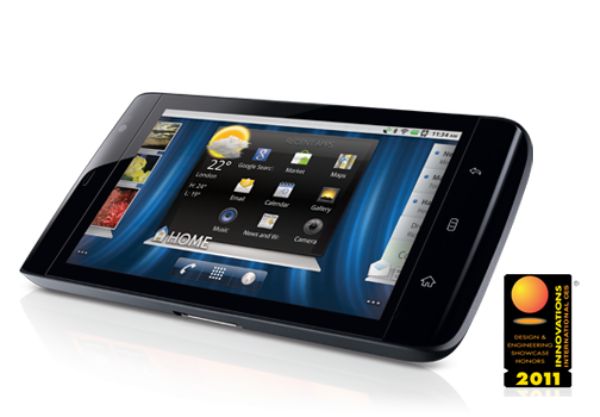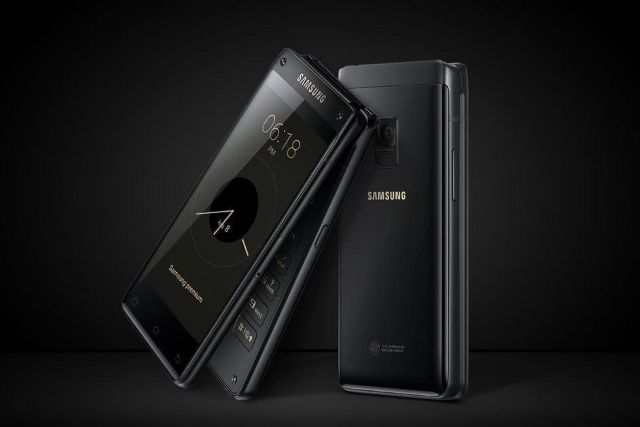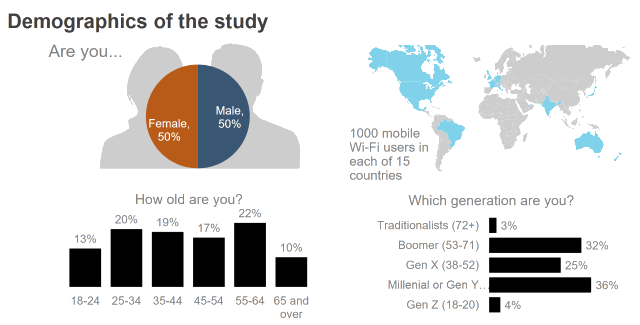



zeebob
Welcome!
Hi there! My name is Bob. Zee Bob! I am here to teach you about
Zee Web :)
Mostly Internet technologies and tech stuff. These are my passions.
Besides chess, of course...
Zee Web :)
Mostly Internet technologies and tech stuff. These are my passions.
Besides chess, of course...
Latest tech news
Rechargeable Alkaline Batteries
I've got a confession to make: I love my smartphone. Yes, I know, you love your smartphone as well. There's nothing unusual about it, right?
But I've got another confession to make: I hate my phone's battery from the bottom of my heart! I've got a smartphone with a big screen, because my eyes aren't getting any younger. In addition to this, I like to see a lot of info at once, rather than switching lots of tabs all day long.
Yes, I've got a phone that can display several apps at once and I really like it. Unfortunately, its battery will barely last for a day. That's only 12 hours, son. Not even a full 24 hours.
Things get even worse if I start playing games - especially 3D games. Because if I do that, the battery bar gets smaller and smaller by the minute. It can go from (let's say) 50% to 5% in a couple of hours, even if I'm only playing Tetris!
Rechargeable Alkaline Batteries
I've got a confession to make: I love my smartphone. Yes, I know, you love your smartphone as well. There's nothing unusual about it, right?
But I've got another confession to make: I hate my phone's battery from the bottom of my heart! I've got a smartphone with a big screen, because my eyes aren't getting any younger. In addition to this, I like to see a lot of info at once, rather than switching lots of tabs all day long.
Yes, I've got a phone that can display several apps at once and I really like it. Unfortunately, its battery will barely last for a day. That's only 12 hours, son. Not even a full 24 hours.
Things get even worse if I start playing games - especially 3D games. Because if I do that, the battery bar gets smaller and smaller by the minute. It can go from (let's say) 50% to 5% in a couple of hours, even if I'm only playing Tetris!
Copyright © Zee Bob
All Rights reserved
Phone: 815-377-2459
Internet: www.zeebob.com
E-Mail: hello@zeebob.com
All Rights reserved
Phone: 815-377-2459
Internet: www.zeebob.com
E-Mail: hello@zeebob.com




As you can imagine, I was quite mad (and sad) until I've discovered the solution do this problem: a large external battery. It's one of 10,000 mAh, so it can fully charge the phone battery not once, but twice! About 2.5 times, to be more exact.
I love this external battery, because it has saved me so many times, and yet I hate it, because it makes my slim phone look fat and ugly. Basically, it doubles the depth of my phone, making it look as if it was built last century.
Phone manufacturers are aware of the short battery life problem, so they have tried to add larger batteries to their products, without using additional space. Samsung's Galaxy Note 7 is an example of a phone that committed digital suicide because of a compact, larger capacity, overheating battery.
Liquid substances, which are a crucial component of each battery, can cause serious problems. But now, Ionic Materials, a battery research company, has come up with a solution that replaces those liquids with solid-state materials and offers improved performance, while reducing the manufacturing costs - how cool is that?
According to the company representatives, their battery prototype can be recharged close to 500 times, and this is just the first product iteration. If all goes as planned, their technology will soon be found in smartphones and - why not? - in electric cars.
Ionic Materials doesn't plan to build its own battery factory, but rather to work with other battery manufacturers, helping them implement its proprietary technology. It's a wise move, because it keeps the costs low, helping them polish their invention while working in other companies' facilities. The profits will be smaller in the beginning, of course, but they'll surely take off as soon as the technology matures.
I've been waiting for a solution like this for so much time, and now that it is finally here, I look forward to seeing it in action. Who knows, maybe next year we will finally be able to buy phones that can run for a week without needing to be plugged into the charger.
I love this external battery, because it has saved me so many times, and yet I hate it, because it makes my slim phone look fat and ugly. Basically, it doubles the depth of my phone, making it look as if it was built last century.
Phone manufacturers are aware of the short battery life problem, so they have tried to add larger batteries to their products, without using additional space. Samsung's Galaxy Note 7 is an example of a phone that committed digital suicide because of a compact, larger capacity, overheating battery.
Liquid substances, which are a crucial component of each battery, can cause serious problems. But now, Ionic Materials, a battery research company, has come up with a solution that replaces those liquids with solid-state materials and offers improved performance, while reducing the manufacturing costs - how cool is that?
According to the company representatives, their battery prototype can be recharged close to 500 times, and this is just the first product iteration. If all goes as planned, their technology will soon be found in smartphones and - why not? - in electric cars.
Ionic Materials doesn't plan to build its own battery factory, but rather to work with other battery manufacturers, helping them implement its proprietary technology. It's a wise move, because it keeps the costs low, helping them polish their invention while working in other companies' facilities. The profits will be smaller in the beginning, of course, but they'll surely take off as soon as the technology matures.
I've been waiting for a solution like this for so much time, and now that it is finally here, I look forward to seeing it in action. Who knows, maybe next year we will finally be able to buy phones that can run for a week without needing to be plugged into the charger.
Samsung's Flip Phone: hit or miss?
Some companies have visionary leaders. And Dell is a great example! I can still remember Dell Streak, which was launched in 2010.
It was a great phone, packing a 5-inch 480x800 pixels screen (a huge resolution back then) and a 5-megapixel camera that was also able to shoot videos in 720p mode. These two fantastic hardware components were nicely complemented by 512 of RAM and an impressive (for the time) 1,530 mAh battery.
Some companies have visionary leaders. And Dell is a great example! I can still remember Dell Streak, which was launched in 2010.
It was a great phone, packing a 5-inch 480x800 pixels screen (a huge resolution back then) and a 5-megapixel camera that was also able to shoot videos in 720p mode. These two fantastic hardware components were nicely complemented by 512 of RAM and an impressive (for the time) 1,530 mAh battery.

And yet, the phone wasn't received well. People were laughing, asking themselves (and others): "A tablet/combo phone? What sane person would ever want to be seen keeping a phone that large near his or her ear?".
Sadly, the phone was a flop, despite its two decent cameras, the built-in accelerometer and compass, and a stand-by time of up to 400 hours. Dell Streak has even gotten an Innovation award, but this wasn't enough to keep it away from its digital grave. The phone was simply too advanced for its time!
Other companies have learned from Dell's "mistake", and rather than adding sets of unusual features to their products, they try to capitalize on the past. Samsung is one of those companies. It has successfully relaunch its Nokia 3310 hit, for example. New features include a significantly improved battery life - up to 10 times longer than the first model! And this happens despite the addition of a color screen, which is known to draw a lot more power, and the phone camera, a hardware component that uses a lot of power as well.
And now, Samsung has brought the flip phone back. It's a fast, modern looking phone, though. It's got two screens and a high-end camera, for example. It also incorporates a fingerprint sensor.
Sadly, the phone was a flop, despite its two decent cameras, the built-in accelerometer and compass, and a stand-by time of up to 400 hours. Dell Streak has even gotten an Innovation award, but this wasn't enough to keep it away from its digital grave. The phone was simply too advanced for its time!
Other companies have learned from Dell's "mistake", and rather than adding sets of unusual features to their products, they try to capitalize on the past. Samsung is one of those companies. It has successfully relaunch its Nokia 3310 hit, for example. New features include a significantly improved battery life - up to 10 times longer than the first model! And this happens despite the addition of a color screen, which is known to draw a lot more power, and the phone camera, a hardware component that uses a lot of power as well.
And now, Samsung has brought the flip phone back. It's a fast, modern looking phone, though. It's got two screens and a high-end camera, for example. It also incorporates a fingerprint sensor.

It's interesting that the company will only launch it in China, at least for now. Its price isn't known, but I assume that it won't be very cheap. Two decent screens and a 12-megapixel camera can't be that inexpensive, right?
If all goes as planned, the phone will be launched at the end of August. Only time will tell if this product will be a success. If you ask me, I'd say that it's chances of becoming a bestseller are quite slim. Nokia 3310 may have looked appealing to nostalgic people, but flip phones aren't that old, so they won't have too many nostalgic fans.
In fact, this may be the very reason why Samsung has decided to launch it in China. If things go wrong and sales levels are low, its image won't take a big hit. It's the last thing that Samsung wants after the Note 7 scandal.
If all goes as planned, the phone will be launched at the end of August. Only time will tell if this product will be a success. If you ask me, I'd say that it's chances of becoming a bestseller are quite slim. Nokia 3310 may have looked appealing to nostalgic people, but flip phones aren't that old, so they won't have too many nostalgic fans.
In fact, this may be the very reason why Samsung has decided to launch it in China. If things go wrong and sales levels are low, its image won't take a big hit. It's the last thing that Samsung wants after the Note 7 scandal.
The Dangers of Free Wi-Fi
It's a bit weird, but more and more people have started to plan their vacations depending on whether or not they will have free Internet access. And over 70% of them pick their hotels depending on the quality of Wi-Fi signal these days.
Norton has just released a security report which highlights some of the biggest problems that can arise from using a free, open Internet connection. It's a report that discusses the results of an online survey that was run in 15 countries, including Australia, Canada, France, Germany, United Kingdom and the USA.
The main goal of the survey was to understand people's perception about free Wi-Fi services, as well as to uncover potential consumer misconceptions and safety-related issues when it comes to wireless connections.
The study used data provided by over 15,000 respondents - about 1,000 people from each country. Researchers made sure that every respondent uses one or more mobile devices, and connects them to the Internet over free Wi-Fi at least occasionally.
It's a bit weird, but more and more people have started to plan their vacations depending on whether or not they will have free Internet access. And over 70% of them pick their hotels depending on the quality of Wi-Fi signal these days.
Norton has just released a security report which highlights some of the biggest problems that can arise from using a free, open Internet connection. It's a report that discusses the results of an online survey that was run in 15 countries, including Australia, Canada, France, Germany, United Kingdom and the USA.
The main goal of the survey was to understand people's perception about free Wi-Fi services, as well as to uncover potential consumer misconceptions and safety-related issues when it comes to wireless connections.
The study used data provided by over 15,000 respondents - about 1,000 people from each country. Researchers made sure that every respondent uses one or more mobile devices, and connects them to the Internet over free Wi-Fi at least occasionally.

According to Norton, 88% of Canadians have connected their smartphones to a free Wi-Fi hotspot without being aware of (or minimizing) the associated risks.
The risk report states that close to 65% of Canadians believe that their personal info and data are safe even while using the public hotspots that can be found in hotels, restaurants, and so on.
Often times, people use public Wi-Fi to check their bank accounts, access personal information or read emails. It is important to understand that all these actions are dangerous, because your user names and passwords can be easily read by bad people who are connected to the same network.
Hackers use their laptops to monitor the data that travels across the network. And with the right Wi-Fi amplifiers, cable adapters and antennas, they could spy on you from miles away!
Let's face it: most of us can't even tell if a Wi-Fi network is secure or not. Under these circumstances, it's not a surprise that people don't take the needed precautions.
But you are certainly smarter than most people (that's why you are reading this article!) so you'll notice the small lock icon that shows up in your browser bar anytime you visit a secure site. So, don't input any of your personal data into a website form if you don't see that lock in the browser bar!
Of course, you should also disable any application that shares data by default. The less info you share over an unencrypted Internet connection, the better! And if you really have to access sensitive data over an open hotspot, the easiest solution is to encrypt your data using a Virtual Private Network, a.k.a. VPN. This will ensure that the hackers that are sniffing on the network will be unable to read your personal information.
Sadly, the same report shows that only 4% of Canadians make use of a VPN while they are traveling. Don't make the same mistake! Subscribe to a $10 per month service whenever you leave town, and then cancel it the minute you return home. I promise that this is going to be the wisest $10 investment you've ever made!
The risk report states that close to 65% of Canadians believe that their personal info and data are safe even while using the public hotspots that can be found in hotels, restaurants, and so on.
Often times, people use public Wi-Fi to check their bank accounts, access personal information or read emails. It is important to understand that all these actions are dangerous, because your user names and passwords can be easily read by bad people who are connected to the same network.
Hackers use their laptops to monitor the data that travels across the network. And with the right Wi-Fi amplifiers, cable adapters and antennas, they could spy on you from miles away!
Let's face it: most of us can't even tell if a Wi-Fi network is secure or not. Under these circumstances, it's not a surprise that people don't take the needed precautions.
But you are certainly smarter than most people (that's why you are reading this article!) so you'll notice the small lock icon that shows up in your browser bar anytime you visit a secure site. So, don't input any of your personal data into a website form if you don't see that lock in the browser bar!
Of course, you should also disable any application that shares data by default. The less info you share over an unencrypted Internet connection, the better! And if you really have to access sensitive data over an open hotspot, the easiest solution is to encrypt your data using a Virtual Private Network, a.k.a. VPN. This will ensure that the hackers that are sniffing on the network will be unable to read your personal information.
Sadly, the same report shows that only 4% of Canadians make use of a VPN while they are traveling. Don't make the same mistake! Subscribe to a $10 per month service whenever you leave town, and then cancel it the minute you return home. I promise that this is going to be the wisest $10 investment you've ever made!